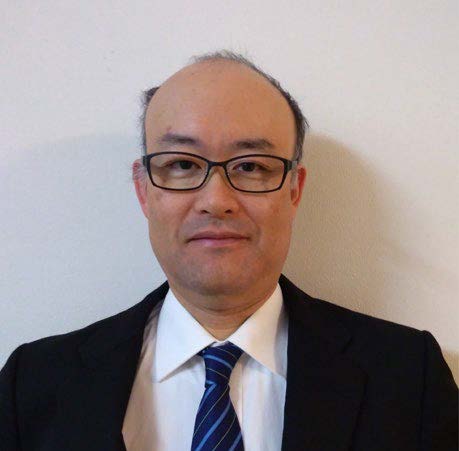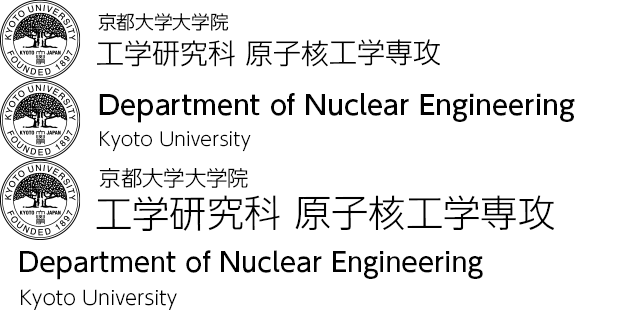Neutron Optics and Applications
Low energy neutrons generated by research reactors or accelerator neutron sources are used for our research. We control the slow neutron beam using the characteristics as matter wave.
Our main research fields are neutron pin interferometry for basic physics, development of new type neutron scattering system for material science and high contrast neutron imaging for engineering and agriculture.
Our site is one of the best in the world as the neutron reflective optical device research & development center.
Academic Staff
Masahiro HINO
 Professor (Institute for Integrated Radiation and Nuclear Science)
Professor (Institute for Integrated Radiation and Nuclear Science)
Research Theme
We are researching experimental elucidation and verification of fundamental quantum mechanical problems using ultra-cold and cold neutron spin interferometers, including observational problems. We are also developing devices to control slow neutrons, including spins.
Contact Information
Institute for Integrated Radiation and Nuclear Science, Laboratory Build. 2F Room 201
TEL: +81-724-51-2450
FAX: +81-724-51-2635
E-mail: hino@* (Add "rri.kyoto-u.ac.jp" after @)
Hidehiro NAKAMURA
Assistant Professor (Institute for Integrated Radiation and Nuclear Science)
Research Theme
In our research on the interaction between polyester and radiation, we are verifying the possibility of creating and controlling various functions of polyester by radiation activity while maintaining its molecular structure. We are applying this to the development of radiation to visible light conversion devices.
Contact Information
Institute for Integrated Radiation and Nuclear Science, Laboratory Build. 2F Room 208
TEL: 0724-51-2463
FAX: 0724-51-2635
E-mail: nakamura.hidehito.3x@* (Add "kyoto-u.ac.jp" after @)
Research Topics
Development of neutron optical devices
Slow neutrons are used for basic physics, neutron scattering, neutron radiography and so on. They are important tools for the studies of the atomic structures of wide variety of samples and non-destructive researches. Neutron beam control technique is essential for these experiments. Slow neutrons have the wavelength of 0.1 - 10 nm, and they act as matter wave. We can use neutron optical technique to control neutron beam. For instance, a multilayer on Si wafer can be a neutron mirror. When we control the thickness and materials of layers, we can manage the energy and spin state of reflected neutrons. As for a supermirror which is Ni/Ti multiplayer, our mirror has the shortest critical wavelength in the world ( April 2003 ).

Figure 1:Neutron reflectivity of our Ni/Ti supermirror. This is a champion data of critical wavelength in the world at April, 2003.
Development of a new type neutron scattering system using neutron spin optics
A neutron has a spin, and the spin state is only up and down in the magnet field. When we use neutron optical technique, we can control neutron beams including neutron spin state. Neutron scattering is an important tool for condensed matter science and material developments because it shows the microscopic static and dynamic structures of samples. Neutron spin echo is one of neutron scattering measurement systems. The employment of Larmor precession of neutron spin in the magnet field gives us the way of energy measurement with high precision and efficiency.
We are developing a new type neutron spin echo machine to propose to the J-PARC project of JAERI&KEK in Tokai, Japan. We already succeeded to show neutron spin echo in KENS, KEK. It is the first experiment to show it with a pulsed neutron source.
Experimental physics of quantum mechanics using very cold neutron and cold neutron spin interferometry
Refraction and reflection of neutron beam at a surface are considered as problems of a rectangular potential barrier in one-dimensional Schrodinger equation. Neutron spin interferometer(NSI) is born in KURRI(Kyoto University Research Reactor Institute) and it is to measure the relative phase difference between up-arrow and downward arrow spin eigenstates.
We have succeeded in measuring precisely spin precession angle of neutrons tunneling through a ferromagnetic film as a function of incident angles using the NSI. This result shows that the Larmor time have measured. It is considered that Larmor time is related to tunneling time associated with the question 'How long does it takes for a particle to tunnel through a barrier ?'.
Furthermore, we have succeeded in measuring precisely spin precession angles of neutrons tunneling and non-tunneling through double-, triple- and multi-rectangular potential barrier represented by Fabry-Perot magnetic thin film resonators. The spin precession angle due to the Fabry-Perot resonator shows oscillation curve as a function of the incident angles, and the curve is well reproduced by the theoretical phase difference of up-arrow and downward arrow spin neutron wave functions based on one-dimensional Schrodinger equation. We demonstrate that amplitude of the curve is proportional to the number of germanium layer (well) though the transmission probability remains constant.

Figure 2:Neutron spin interferometer installed in high flux reactor, Institut Laue-Langevin (Grenoble, France).
Development of the high contrast neutron imaging using neutron optical devices
Neutron radiography is very useful in the non-destructive research and test. A neutron beam penetrating a specimen is attenuated by a sample and detected by an imaging device. Compared to X-rays, neutron beams can be attenuated by light materials, for example, hydrogen and boron, but less by many heavy materials. It makes a unique image which can not be made by other methods. In these days, the research utilization of neutron radiography is broadening to biological and agriculture fields as well as industrial ones.
We use very cold neutrons for the high contrast imaging. The large absorption cross section of very cold neutron makes it possible to detect a very small difference or a tiny object in a sample. This is a unique way to measure a water distribution in a plant with the resolution of 0.1mm in space.

Figure 3:Water distribution in a leaf of chrysanthemum before and after vacuum cooling measured by very cold neutron radiography
